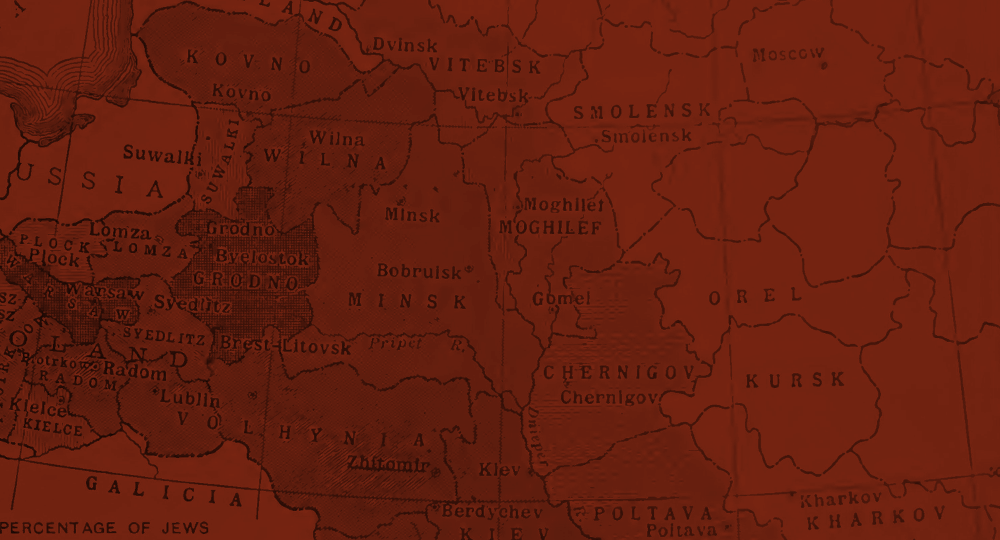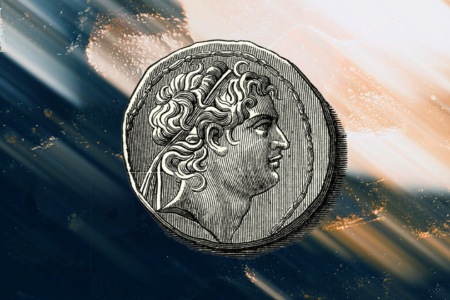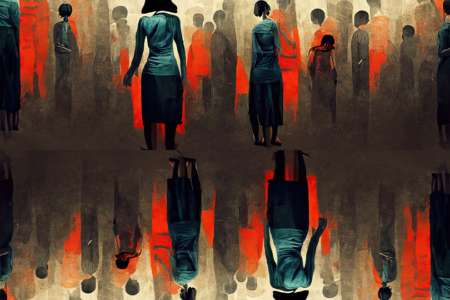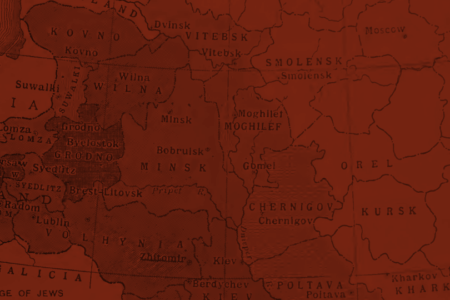Pale of Settlement: Czarist Russia’s Giant Ghetto
Here’s a phenomenon worth investigating: How did God preserve the Jewish people as a distinct group while they were exiled from their homeland and scattered throughout the world?
The answer is a painful one. When God set them apart as a special treasure to Himself (Dt. 7:6), the byproduct became hatred and alienation. For millennia, the nations have ostracized the Jewish people and made their lives a misery.
But what Satan meant for evil, God meant for good, even if it didn’t seem so at the time. God preserved Jacob’s descendants through their bondage in Egypt, keeping them separate from the Egyptians, who would not intermarry with Hebrews. Similarly, He preserved their identity among the Gentiles because most countries segregated Jews from the rest of the population. A salient example is the Jewish experience in Eastern Europe where, for almost 150 years, Jews were confined to the infamous Pale of Settlement.
Persecution in the Pale
The Pale consisted of territory Russia acquired from the partition of Poland in 1772.1 Before then, czarist Russia had few Jews. Yet 80 percent of world Jewry lived in Poland, where Jewish people enjoyed a fairly normal life.2
When Poland was partitioned between Russia, Prussia, and Austria,3 Russia received the bulk of the area’s Jewish population and didn’t know what to do with it. So it created the Pale of Settlement in 1791. The term pale, from the Latin word palus, refers to a boundary stake and underscores the Jewish burden of being boycotted.
Many believe the idiom “beyond the pale,” meaning “unacceptable,” derives from the Pale of Settlement. The area encompassed parts of modern-day Russia, Ukraine, Poland, Belarus, Lithuania, Moldova, and Latvia and covered some 386,000 square miles between the Baltic and Black Seas.4
Well acquainted with the Russian Cossacks’ brutality, the Jews in the Pale must have been terrified when jurisdiction over them passed to the czar. Earlier, in the Cossack-Polish War (1648), Cossacks massacred a group of Jews who refused to convert to the Russian Orthodox faith:
Killing was accompanied by barbarous tortures; the victims were flayed alive, split asunder, clubbed to death, roasted on coals, or scalded with boiling water. Even infants at the breast were not spared. . . . Scrolls of the Law were taken out of the synagogues by the Cossacks who danced on them while drinking whiskey. After this Jews were laid upon them and butchered without mercy.5
Jewish historian Solomon Grayzel said that after Russia took over Poland, instead of trying to improve the economic conditions of the poverty-stricken population, it preferred to concentrate on “how most effectively to destroy Jewish life.”6 Eventually, the czarist government expelled the Jews from the rural districts and forced them into what Grayzel said “was really a large-scale ghetto.”7
Three government decrees (1783, 1791, and 1794) officially confined Russia’s Jews to what became the Pale under the reign of Catherine the Great, who greatly restricted Jewish commercial rights.8 There, they lived in little villages called shtetls, mostly as tradesmen and shopkeepers.
At one point, the Jewish population inside the Pale reached about 5 million, which constituted 40 percent of world Jewry and 95 percent of Russian Jewry. In their isolation, the Jewish people spoke Yiddish and created a distinctive way of life for themselves, remaining separate from the Gentiles and Gentile practices.
Under the tyranny of the antisemitic Czar Nicholas I, however, Jewish people were forced to change their names; males were forced to change their clothes, trim their hair, wear short beards, and serve on the front lines of the Russian military. Grayzel called Nicholas I “one of the cruelest and most unimaginative tyrants that ever lived.”9 As part of his attempt to “Russify” Jewish soldiers (some as young as 12), he also forced them to violate their dietary laws and eat pork.
Viewing the Jews as dangerous aliens, the czar seized Jewish children and put them into Christian schools. He also reduced the Pale in size and expelled Jews from the cities of Kiev, Sevastopol, and Nikolayev.10 During this period, Jewish people were accused of ritualistic murders, were heavily taxed, and experienced forced conversions and oppression. Worse, their lives in the Pale were plagued with pogroms.
Three times, between the years 1881 and 1921, Jews were beaten, killed and burned out of their homes. Each attack was more brutal than the preceding. Mass destruction, thousands killed, hundreds of thousands wounded, orphaned, and rendered homeless—this was the legacy of pogroms.11
The first wave of pogroms hit the Pale when Czar Alexander II, who was somewhat more permissive with Jewish freedoms, was assassinated in 1881.12 People blamed the Jews, resulting in the harsh May Laws against the Jews under Czar Alexander III’s reign (1881–1894).13 Those laws even allowed Christians within the Pale to force Jewish people from their homes.14
The second wave of pogroms occurred from 1903 to 1906, during the First Russian Revolution (1905).15 This period serves as the historical backdrop for the famous musical Fiddler on the Roof. Fiddler was composed from stories of Yiddish playwright Sholem Aleichem (1859–1916) and is set in 1905 during the reign of Czar Nicholas II (1894–1917). During this period, Jewish people suffered through more than 650 pogroms.16 The third wave came during the Bolshevik Revolution (1917–1923) as the country fell into communism.
In light of Jewish history under the czarist monarchy, it is no wonder Tevya, Sholem Aleichem’s main character in Fiddler, humorously adapts the Aaronic blessing (Num. 6:24) to say, “May God bless and keep the czar far away from us!”
The pogroms were so terrible they galvanized a mass migration of Jewish people to the United States, particularly to New York, in the late 19th and early 20th centuries. Many of today’s American Jews had parents, grandparents, or great-grandparents who grew up in the Pale.
Torn From the Books
The Pale of Settlement endured until World War I, when the Russian military high command expelled Jews from the area, which was in the war zone, because it didn’t trust them. The government formally abolished the Pale in 1917.17
Unfortunately, when World War II broke out, the area of the former Pale suffered the most in the Holocaust because it was still home to a huge percentage of European Jewry. Of all the countries in Europe where Jewish people suffered, Poland and Soviet Russia rank at the top concerning lives lost (approximately 3 million and 1.3 million, respectively).18
I’ve heard many of my Jewish friends say, “The Jewish people are a traumatized people.” Their statement captures what it means to be Jewish in light of a long and tragic history. Sadly, Catholic scholar Edward Flannery’s often-quoted observation still rings true: “It is little exaggeration to state that those pages of history Jews have committed to memory are the very ones that have been torn from Christian (and secular) history books.”19
Christians should be outraged at the antisemitism that has tormented God’s Chosen People for centuries. We should mourn over the pain they have endured. But we should also be outraged that people who called themselves Christians blasphemed the name of Jesus by acting nothing like the Savior toward the Jewish community from which He came.
Since, as Christians, we regard self-sacrifice as a staple of our faith, we ought to be willing to love and stand with God’s Chosen People against persecution. One of the most biblical things we can do is rejoice with them over the establishment of the State of Israel in 1948. Indeed, Israel’s resurrection was the fruit of movements that began as a reaction to the pogroms in the Pale of Settlement.
But it also is a fulfillment of God’s many promises to bring the Jewish people back into their own land. Despite the trials yet to come, God will deliver the bright future He has promised Israel: “I will put My Spirit in you, and you shall live, and I will place you in your own land. Then you shall know that I, the LORD, have spoken it and performed it” (Ezek. 37:14). We look forward to the day when the Holy Spirit indwells all Israel (vv. 9–14).
As horrible as it was, ostracism prevented assimilation and preserved the Jews as a people who someday will glorify God in His Kingdom. When that day comes, they no longer will hear “the taunts of the nations anymore, nor bear the reproach of the peoples” (36:15). In fact, God said, “Then you shall dwell in the land that I gave to your fathers; you shall be My people, and I will be your God” (v. 28).
ENDNOTES
-
-
- Herman Rosenthal, “Pale of Settlement,” Jewishencyclopedia.com (tinyurl.com/3rzjtzad).
- “Jewish Life in Poland before the Holocaust,” facinghistory.org (tinyurl.com/2s4yw5v7).
- Ibid.
- “Pale of Settlement, Jewish,” Britannica Student Encyclopedia (tinyurl.com/paleee1).
- Barry E. Horner, Future Israel: Why Christian Anti-Judaism Must Be Challenged (Nashville, TN: B&H Academic, 2007), 28.
- Solomon Grayzel, A History of the Jews (Philadelphia, PA: Jewish Publication Society, 1968), 601.
- Ibid., 603.
- “Pale of Settlement, Jewish.”
- Grayzel, 603.
- “Nicholas,” jewishvirtuallibrary.org (tinyurl.com/2p9eahva).
- Shlomo Lambroze, “The Tsarist Government and the Pogroms of 1903-06,” Modern Judaism 7, no. 3 (1987): 287–96 (jstor.org/stable/1396423).
- “Pale of Settlement, Jewish.”
- Ibid.
- Ibid.
- Lambroza.
- Ibid.
- “Pale of Settlement,” The Yivo Encyclopedia of Jews in Eastern Europe (tinyurl.com/bdzz5khp).
- “Jewish Losses During the Holocaust: By Country” United States Holocaust Memorial Museum, encyclopedia.ushmm.org (tinyurl.com/yvpn68nd).
- Edward Flannery, cited in Michael Brown, “When the Church Ruled by the Sword,” christianpost.com (tinyurl.com/yk9cmn5p).
-








Shalom Cameron.
Thanks so much for this article. My heart continues to weep for the Jewish people. As Jeremiah said in chapter 17:9 – “The heart is more deceitful than all else and is desperately sick; Who can understand it?” I will never understand how there can be such hatred in the minds of men toward a nation of people generation after generation. However, such is the case when man has rejected God…Satan is the one who will rule in the minds and hearts of those who choose to walk in darkness.
I also see God’s great wisdom in the ways He has preserved His people as a distinct group, painful as it was…and still is.
Blessings,
Janice